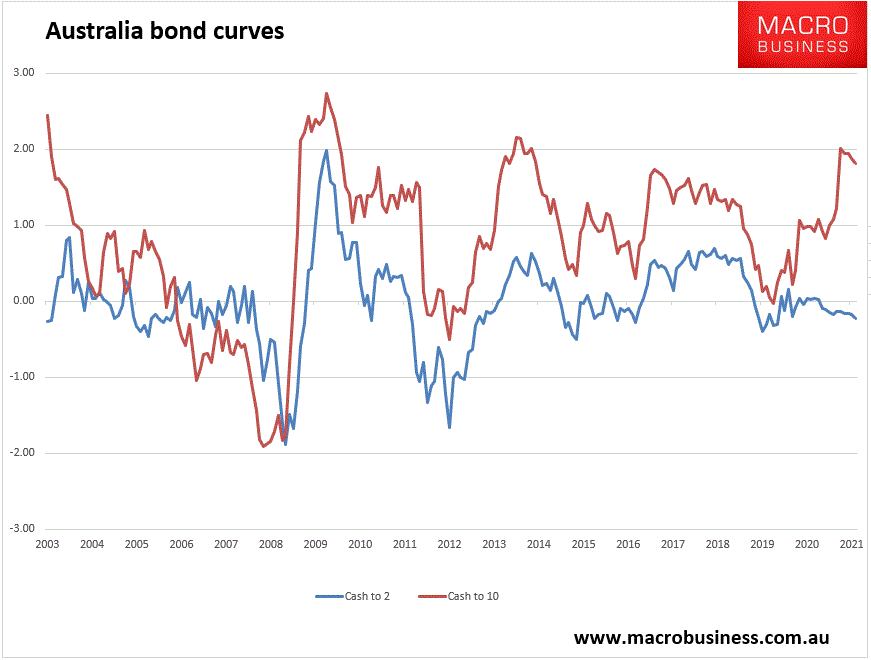As noted last week, CBA is not a growth stock. It barely qualifies as a cyclical. Yet, here it is now trading on 22x times forward earnings, nearly double its historic average:

It now sports nearly a 50% premium to its peers against which its differences are cosmetic at best.
Now, I don’t want to upset anybody, but the conditions that generated this bubble are changing fast. Once past the post-COVID recovery phase, it has been the inflation trade and accompanying steepening yield curve that has driven the bank bid. Banks borrow short and lend long so a steepening curve lifts all lending boats.
But that trade looks awful toppy to me:

It does matter if this is a bull or bear flattening of the curve. The former is when short-end rates rise faster than the long end suggesting a still strong cyclical juncture. The latter is when the curve flattening is because long-end rates fall despite the short-end rising, suggesting a cycle running out of rope. This is probably a bull flattening which is more advantageous than a bear flattening to an ongoing bank bid.
But, I can see this turning bear flattening very fast as DM central banks move to tighten just as the US economy goes over its fiscal cliff, China slows sharply through H2, supply-side frictions dissipate and commodity prices crater.
There might be some buying support for banks as yields fall given still fat dividends but, fundamentally, at an openly ridiculous 22x, CBA looks a lot like a bubble set to burst.

